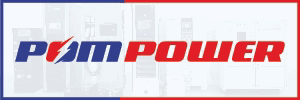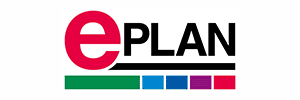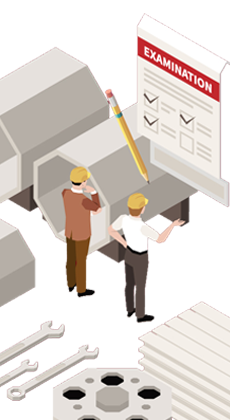Schedule a Call Back
Injection Moulding Machine Selection
 Technical Articles
Technical Articles- Oct 05,12
While choosing an Injection Moulding Machine, a buyer would be concerned about lot of factors like cost, productivity, after-sales-support, brand, etc. But nowadays one more factor which has attracted much attention is energy consumption of the machine. Industrial motor-driven systems consume more than 60% of global manufacturing electricity annually which offer one of the biggest opportunities for energy savings. The International Energy Agencies estimate that up to 7% of global electricity demand could be saved by more energy-efficient motors and motor systems. At present, both markets and policy makers tend to focus exclusively on individual system components, such as motors or pumps. Industry has significantly improved its energy efficiency in recent decades. But industry's total energy use continues to grow as a result of continuing large increases in the volume of production. As a result, modest energy efficiency improvement rates will not be sufficient to stabilise or decrease the sector's energy demand in absolute terms. In order to make significant reductions, ambitious energy saving measures need to be implemented.
Europe's Association for Plastics and Rubber Machinery Manufacturers (EUROMAP) has developed certain standards which defines the energy efficiency and performance level of injection moulding machines to provide transparency to both manufacturers and buyers for the purpose of comparison analysis and later to choose the suitable Machine.
Introduction
Among all the standards defined, Euromap 4, 6 and 60 are the most demanding nowadays for performance based selection. You will find the comparison based on these three standards among the different varieties of injection moulding machines which run on the concepts of hydraulic, hybrid and all electric technologies in this article.
Euromap 60 recommendation helps the manufacturers of injection moulding machines to determine the energy consumption of their machines under defined conditions. For this purpose, three different test cycles were defined, covering typical applications of Injection moulding machines.
Euromap 6 defines the Drycycle time of the machine under specified conditions. A buyer can judge the machine's production capacity based on this standard.
Euromap 4 provides the actual injection efficiency of the machine. This standard defines the machine's injection capabilities for the comparison purpose.
Apart from these the article also includes various analyses done to obtain the benefits of all electric and hybrid servo machines over conventional hydraulic machines.
Euromap Comparison

Chart 1 determines the comparison of energy consumption based on Euromap 60 among the different varieties of injection moulding machines by means of motor/pump technology. From the analyses it was observed that the energy consumption of an all electric machine was 65% less compared to conventional hydraulic machine with fix delivery pump driven by induction motor, 34% less compared to the hydraulic toggle machine with electronic variable delivery pump driven by induction motor, 13% less compared to a hydraulic ram type servo machine and only 7% less compared a servo machine with the toggle
mechanism along with Injection on linear motion guideway which has created a little tough competitive environment for all electric machines where machine cost and energy consumption are the prime concerns for a buyer.

Chart 2 provides the comparison of Euromap 6 drycycle times. From the chart it can be concluded that if fast cycling is the first priority, all electric machines are there for the buyers. All electric have 10% faster Euromap 6 cycle time compared to hydro mechanical toggle machine and 35% faster than hydraulic ram machines.
Functional Consistency

The previous topics described that all electric machine has an edge over hydraulic and hybrid machines in the areas of energy consumption, production rate and system capabilities/losses. Apart from this they also provide best consistency in the major functions compared to its rivals. Chart 4 (a) and (b) describes the consistency of cycle time in all electric and hydraulic machines respectively. It can be seen that all electric showed 0.0% inconsistency in cycle time and the same for a hydraulic machine was 0.8%. The same superior consistency is maintained in all electric machines for rest of the functions like timings of mould closing-opening, injection, ejection, etc.
Positional Accuracy

Not only the functional consistency but the positional accuracy is also at the highest level in all electric among all machines. Chart 5 (a) and (b) shows the Injection shot size accuracy in all electric and hydraulic machines respectively. All electric had 0.0% inaccuracy in the Injection shot size where as for a hydraulic machine it was 3.5%. The same difference can be observed in the mould opening and ejector positions.
Both the functional consistency and position accuracy have direct effect on product. Poorer these two factors, poor will be product mass consistency. Hence the above analyses prove that all electrics have best consistency in product mass also.
Power Factor, Generation of Reactive Power & Life of Electrical/Electronic Components

As it's well known that induction motors are one of the biggest reasons for making power factor poor and generating high amount of reactive power (kVAR) which in turn increases the current demand and results in reduced life of electrical and electronic components.
Due to this disadvantage they also demand higher amount of Apparent power (kVA). In all electric and hydraulic machines

driven by servo motors and drives which themselves correct the power factor, reduces the generation of kVAR and hence lowers the current and kVA demand. Chart 6 shows the kVAR generation for a complete cycle in a hydraulic machine driven by induction motor and a servo machine. It was observed that a servo machine generates approx 90-95% less reactive power and have approx 30-35% higher power factor compared to an induction motored machine.
Hence a buyer can survive from the penalties of poor power factor and exceeding demand loads as well as can reduce the capital cost of load demand significantly with the servo driven machines.
Summary

To conclude, Hydraulic Servo and all electric injection moulding machines are superior to the conventional hydraulic injection moulding machines. Pollution reduction is the additional benefit of servos and all electrics to environment (reduction of 1 kWh results in less emission of 0.4-0.9 kg of CO2).
Although the factor, a buyer would be concerned about these two types of machines is cost. Though the hydraulic servo machines have become closer to the conventional hydraulic machines in terms of cost, all electrics still have a scope for reducing their cost to compete down its alternatives.


Apart from the benefits described above, the all electric machines have few more advantages like no oil consumption and oil maintenance, suitable for clean room applications- specifically for medical applications, least start-up times because no oil means no need to wait for oil preheating, less heat radiation, utility saving like cooling water, chillers, oil filtration units and hence an important benefit - least environment impact. The

Radar Chart in Chart 7 explains a summarised analysis which clears the standing of each type of machines. This chart can be one of the important references for a buyer to choose the right injection moulding machine.
Related Products

Heat Exchanger Scale Removal Compound -hesr-300


Universal Tapping Machine -model Tr-10/15
Tapping
Machine Tools offers universal tapping machine -model TR-10/15.
Hi There!
Now get regular updates from IPF Magazine on WhatsApp!
Click on link below, message us with a simple hi, and SAVE our number
You will have subscribed to our Industrial News on Whatsapp! Enjoy














